Electricity
Electricity
How We Approach Electricity
- Electricity can be beautifully described with physics and mathematics
- However, we will focus on building an intuitive understanding and applying principles to build devices
- There will be some basic math, but that is not our focus
- Rules of Thumbs
Electricity Analogies


Common Analogy
-
Electricity can be thought of as water flowing down a pipe
-
The higher the water falls from, the greater the pressure
-
More water can flow (and flow faster) through a larger and smoother pipe
-
Water can be stored in a container (like a battery)
Common Analogy
- The “pressure” (or height) of the water is the voltage
- Measured in units called volts (V)
- Higher voltage means more potential energy
- Our circuits will typically consider voltages 0v - 5v
Common Analogy
- The “rate of flow” of the electricity is the current
- Measured in units called amperes or amps (A)
- Higher amperage means electrons are flowing faster
- In equations, current with be denoted with the letter I
- Note: 1 A is a lot! Our projects will consider smaller values such as 0.2 A.
- Instead, we will say 0.2 A is 200 milliamps (mA)
Compare
Consider two straws. Which has greater flow?
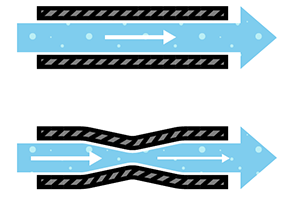
Resisting the Flow
- The narrower pipes restrict or resist the flow of water
- The measure of how well something resist or allows electricity is resistance
- Measured in units called Ohms (Ω)
- More Ohms means more resistance, which means less current (flow)
Resistors
- Resistors conduct electricity, but are used to restrict / slow the flow of current
- They can be connected either direction
- We measure values from 0Ω to 10,000Ω
- 10,000 Ohms is 10 kiloOhms (10 KΩ)


Accessibility Note
- Resistor values are determined visually by color bands
- Unfortunately resistor labeling is not accessibly designed
- To support students who are color blind or have difficulty distinguishing colors, here are resources for support
Key Concepts
- Electrons are negatively-charged particles
- Electricity is the flow of electrons from positive to **negative **(flow of energy)
- Electronics is the study of devices that control / interact with the flow of electricity
Circuits
- Electricity will only flow if there is a circuit
- A circuit is a complete loop from a positive voltage source to a negative (lesser) source, through a conductive material
Voltage as Difference
- When we describe voltage, we are measuring the difference between two points
- In the water analogy, water could fall from 500 ft to 400 ft, or from 100 ft to 0 ft
- In both cases, water fell a difference of 100 ft, but the reference point changed
-
In a circuit, we commonly call the reference point Ground (GND) and say it is 0V
- In homes and buildings, ground is literally connected to the earth
Voltage Source
- In our circuits, we will use a voltage source to provide energy potential
- USB power: 5v (also stepped down to 3.3v which the Photon 2 uses)
- 9V battery: 9v
- Rechargeable lithium battery: 3.7v
- Our circuits will have a positive voltage (e.g. 3.3v or 5v) and ground voltage (0v)
- We will consider that current flows from the positive part of the circuit to the negative
Ohm’s Law
- There are only a couple electrical laws that we need to know
- There is a relationship between voltage (V), current (I), and resistance (R)
V = I * R
or Voltage = Current * Resistance
- Rule of thumb: As resistance increases, the current decreases
Example
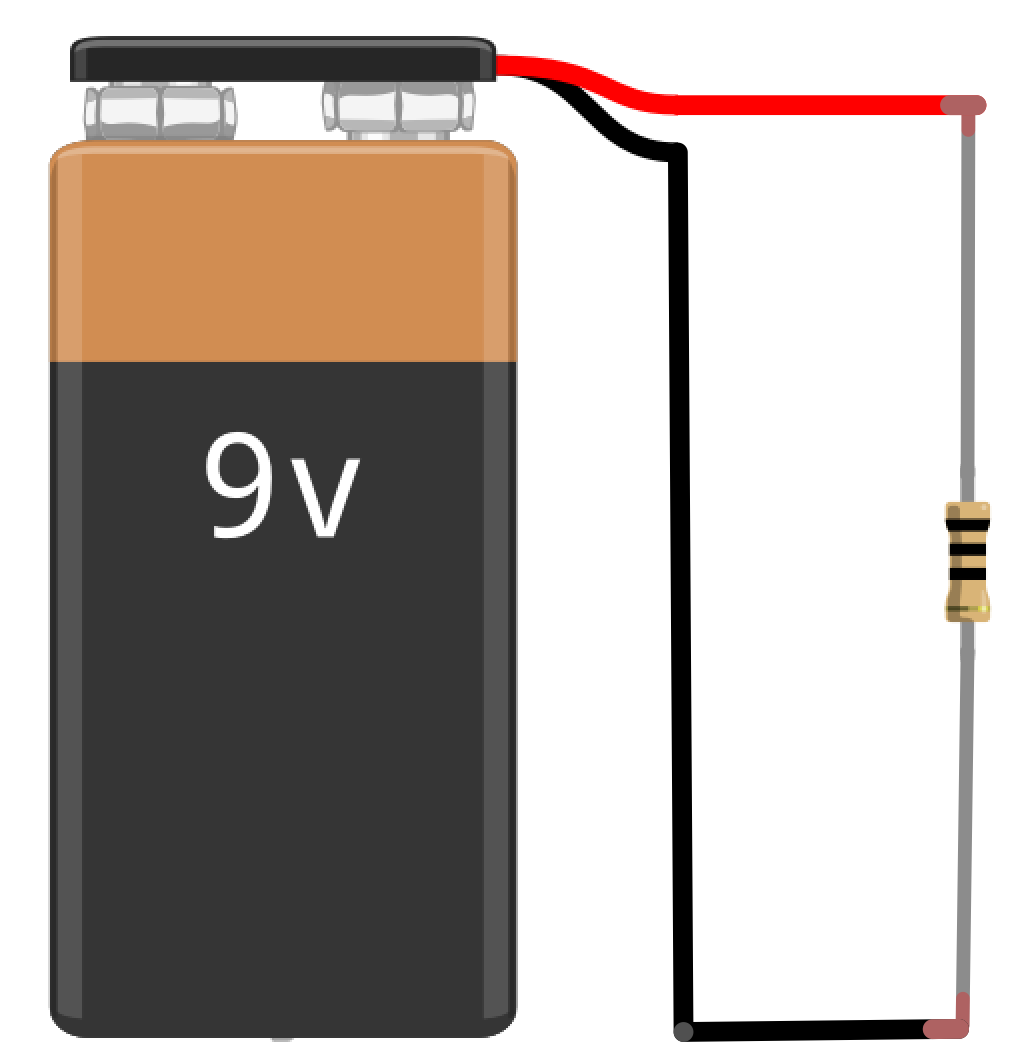
1.) The voltage source is 9v. If we have a resistor that is 300 Ohms, what is the current? 2) The voltage source is 9v and you want to provide a current of 9mA. What size resistor should we use?
Building our Circuits on Breadboard
- We will use breadboards to connect our circuits
- The power rails (on the long ends of the board) are all connected together
- On the interior, each group of 5 pins are connected
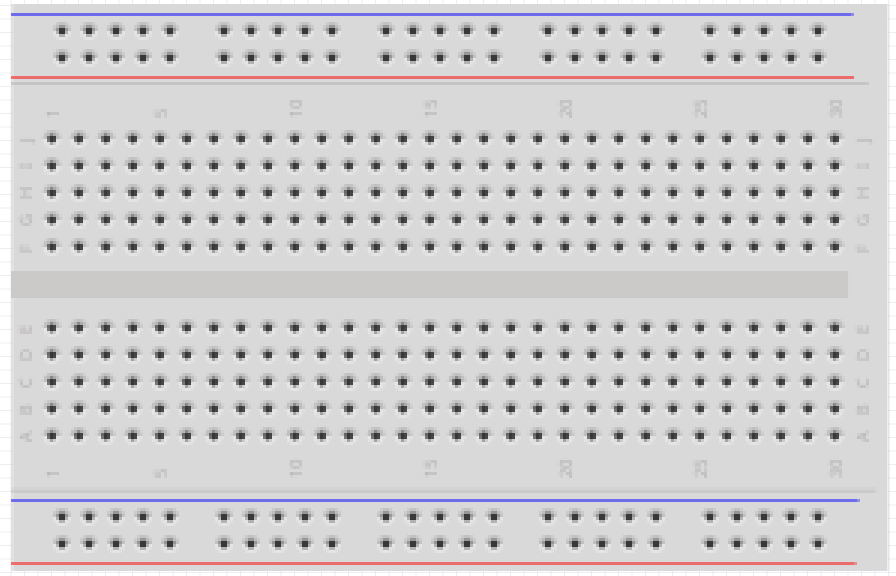
Inside a Breadboard
- Breadboards are built with rows and columns of connected pin sockets
- Underneath each row and column are strips of metal that form electrical connections
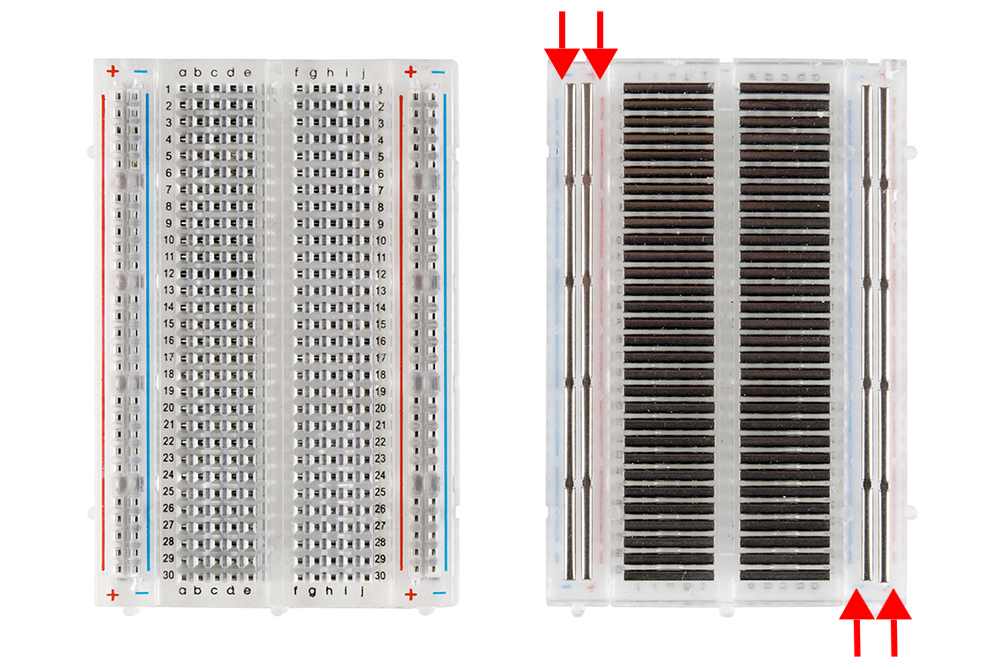
Breadboard Connections
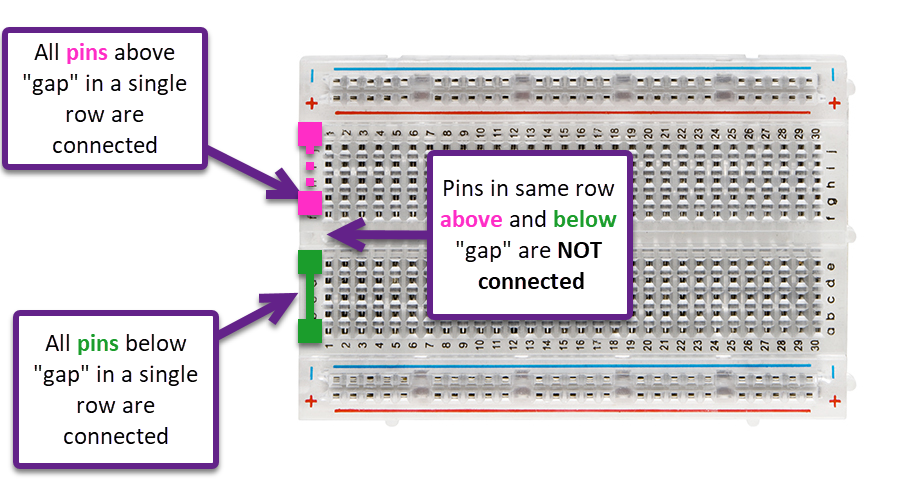
Breadboard Connections
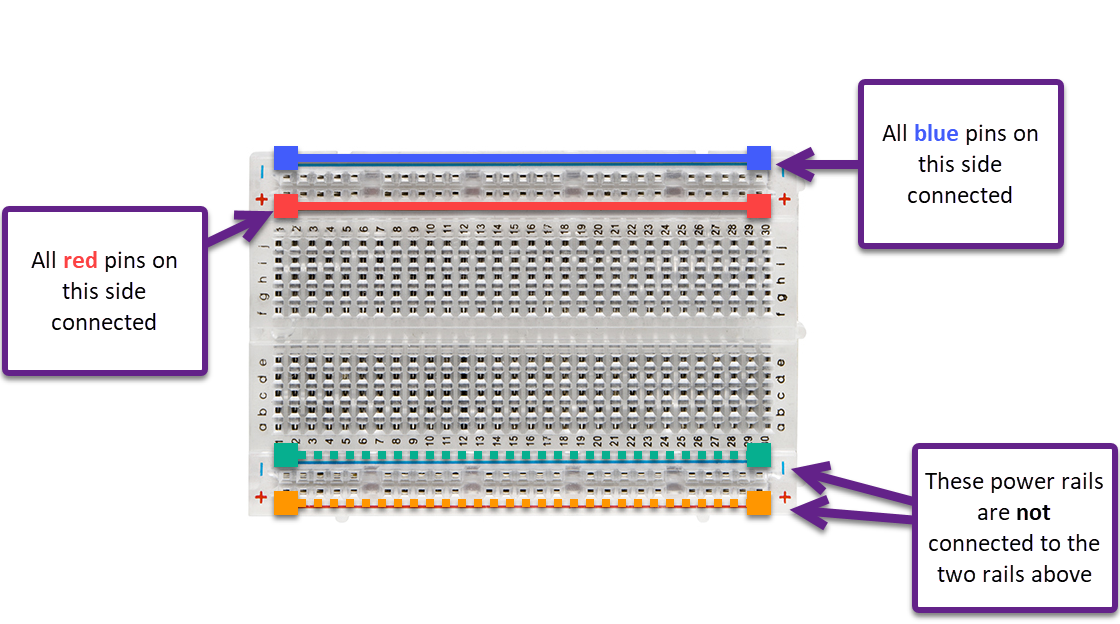
Important Note
- Different size breadboards are mostly identical, but note that the power rails are not connected the entire length of the board
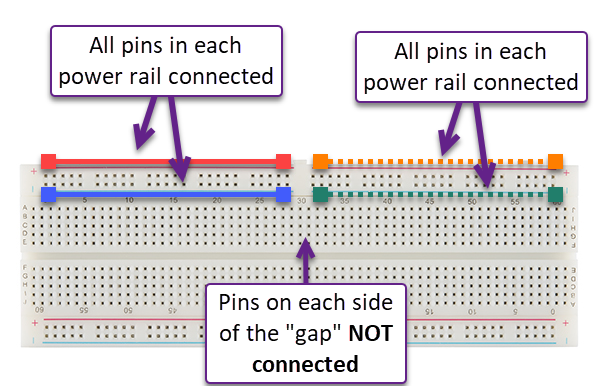
Credits
- Mabacam Flickr via Compfight cc
- PickComfort Flickr via Compfight cc
- verchmarco Flickr via Compfight cc
- Craig Walkowicz Flickr via Compfight cc
- Images created with Fritzing